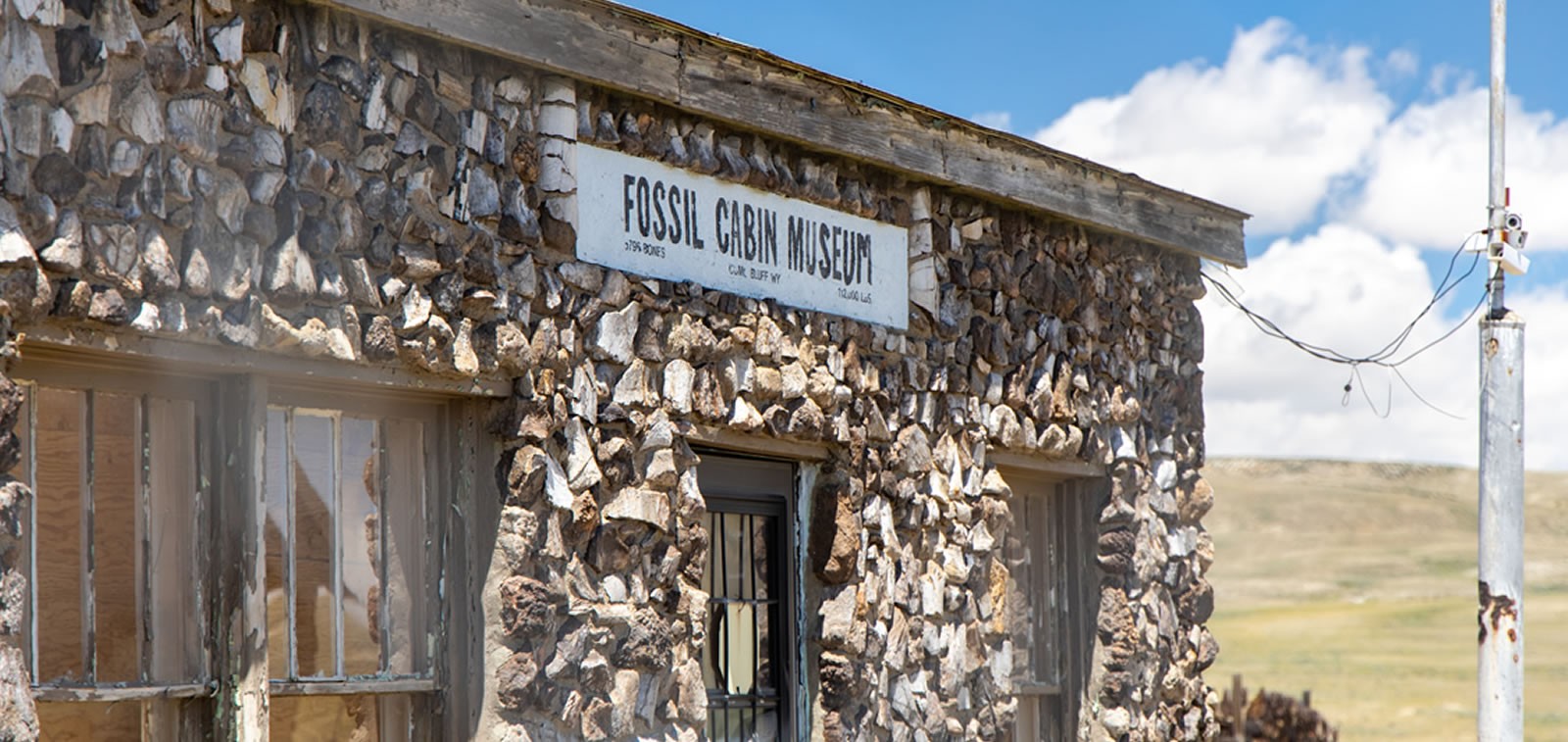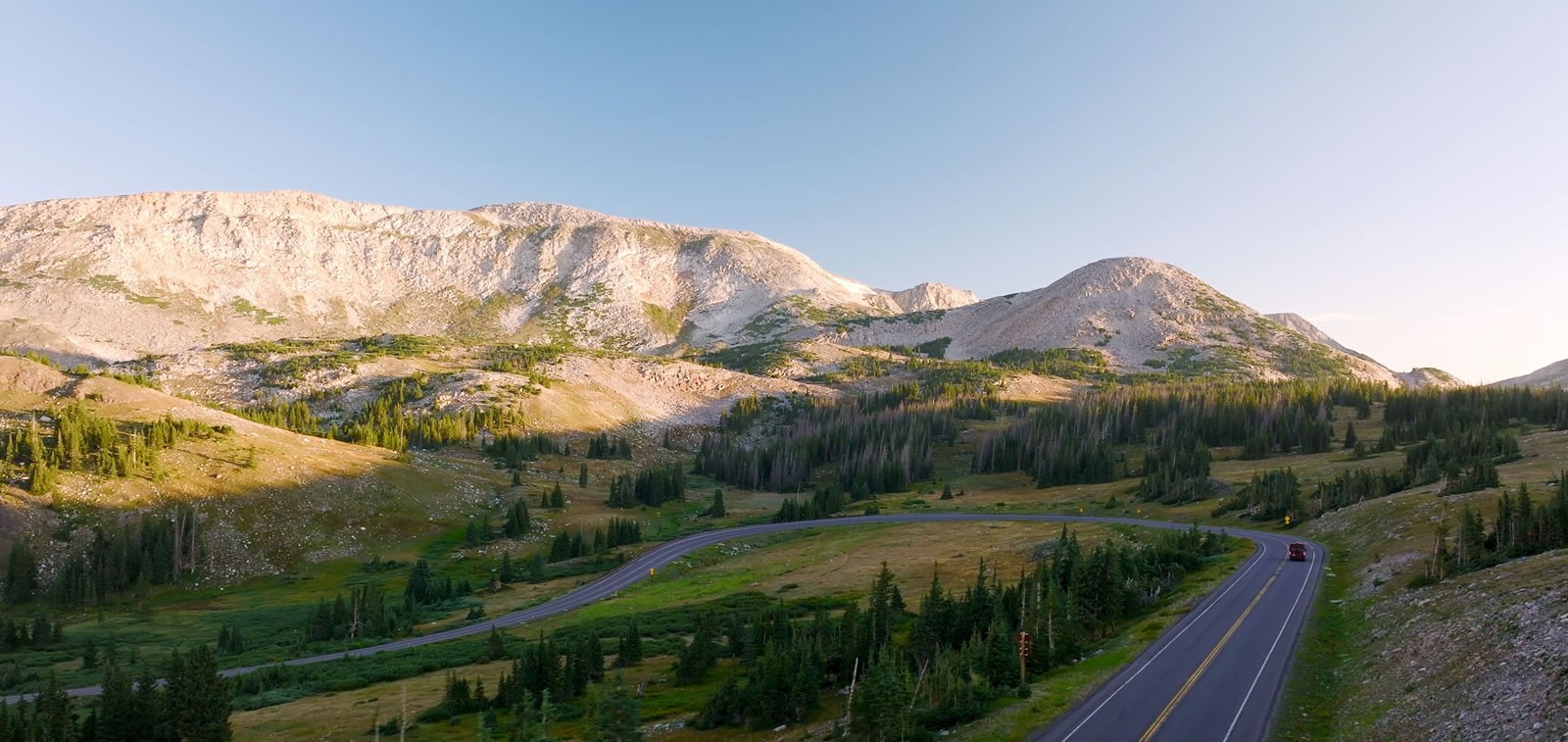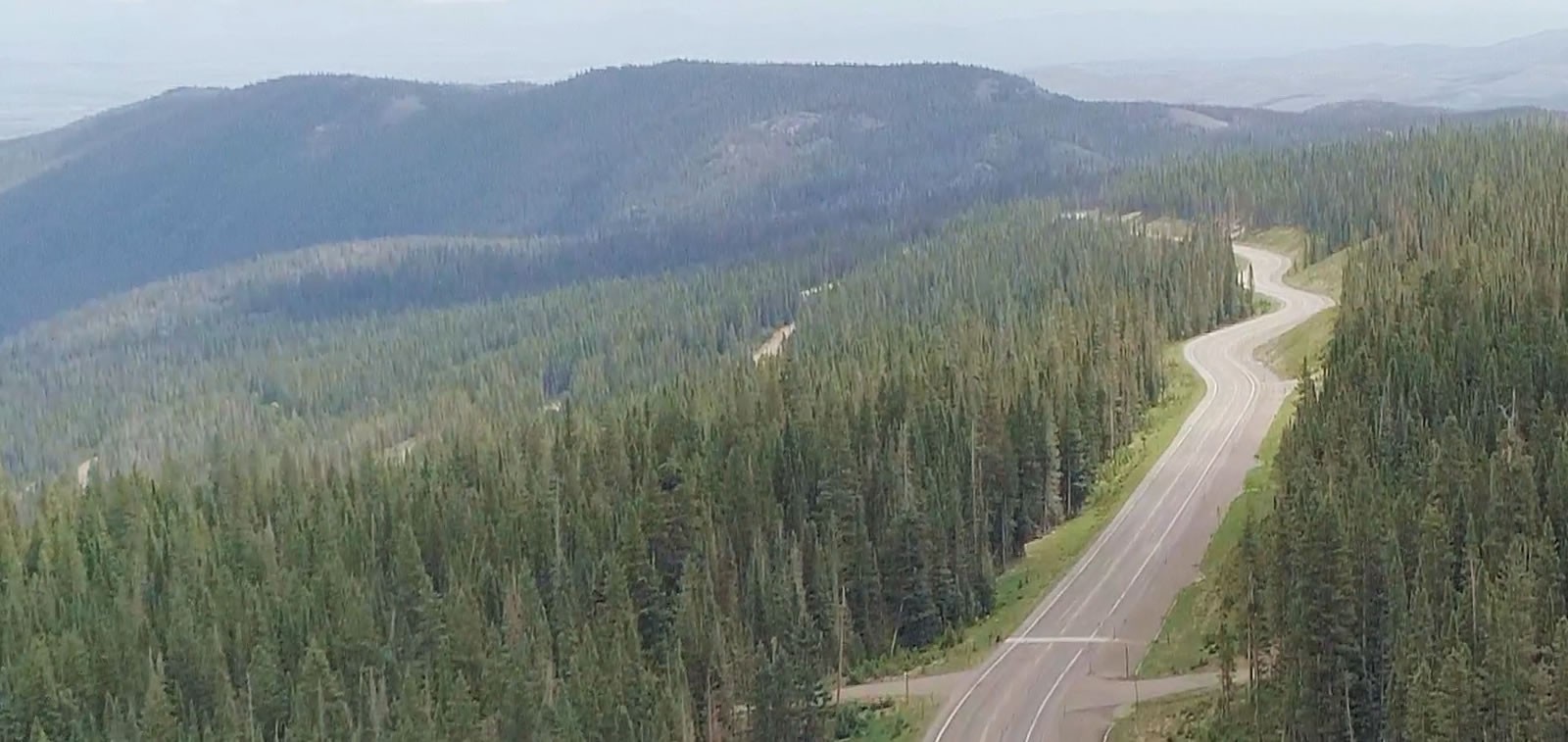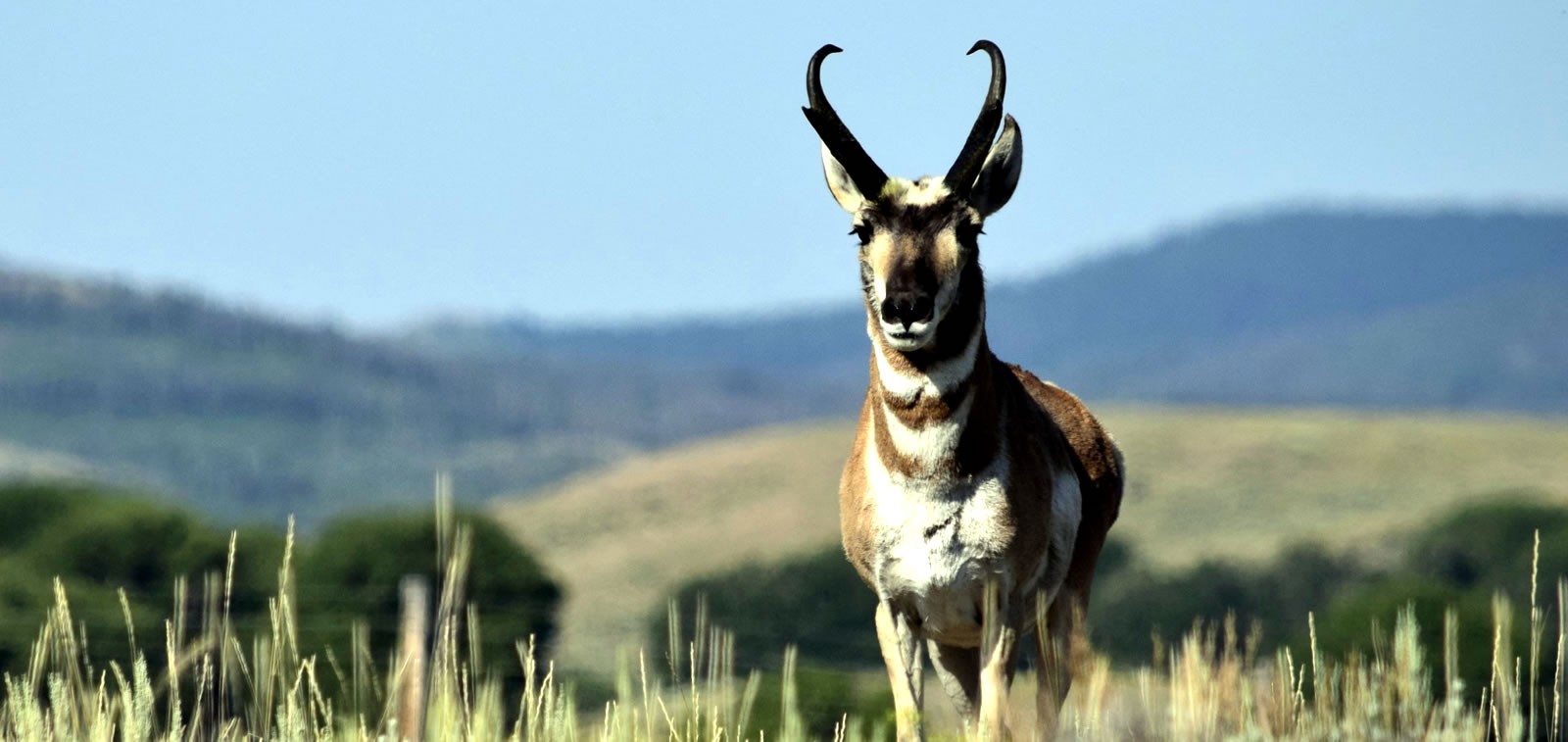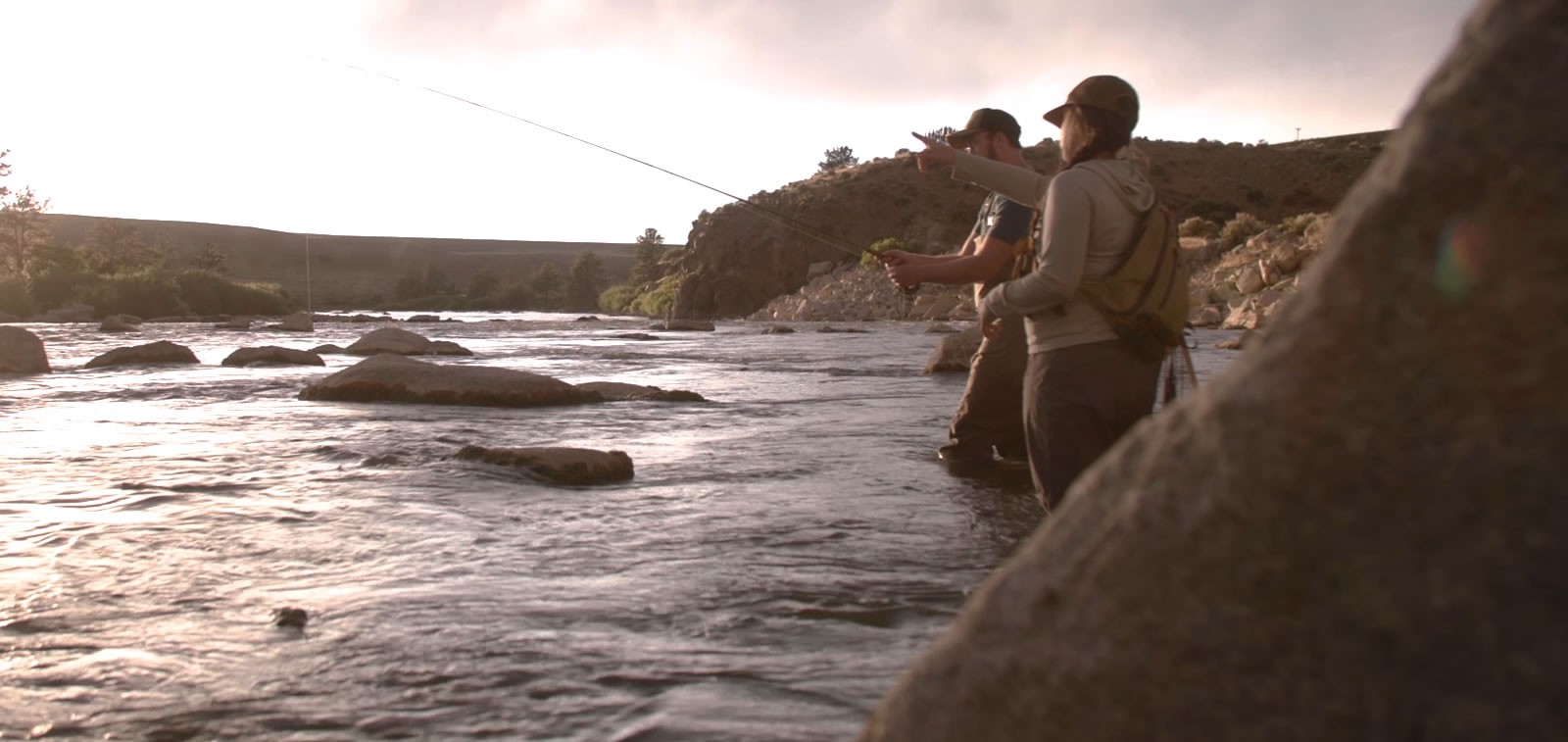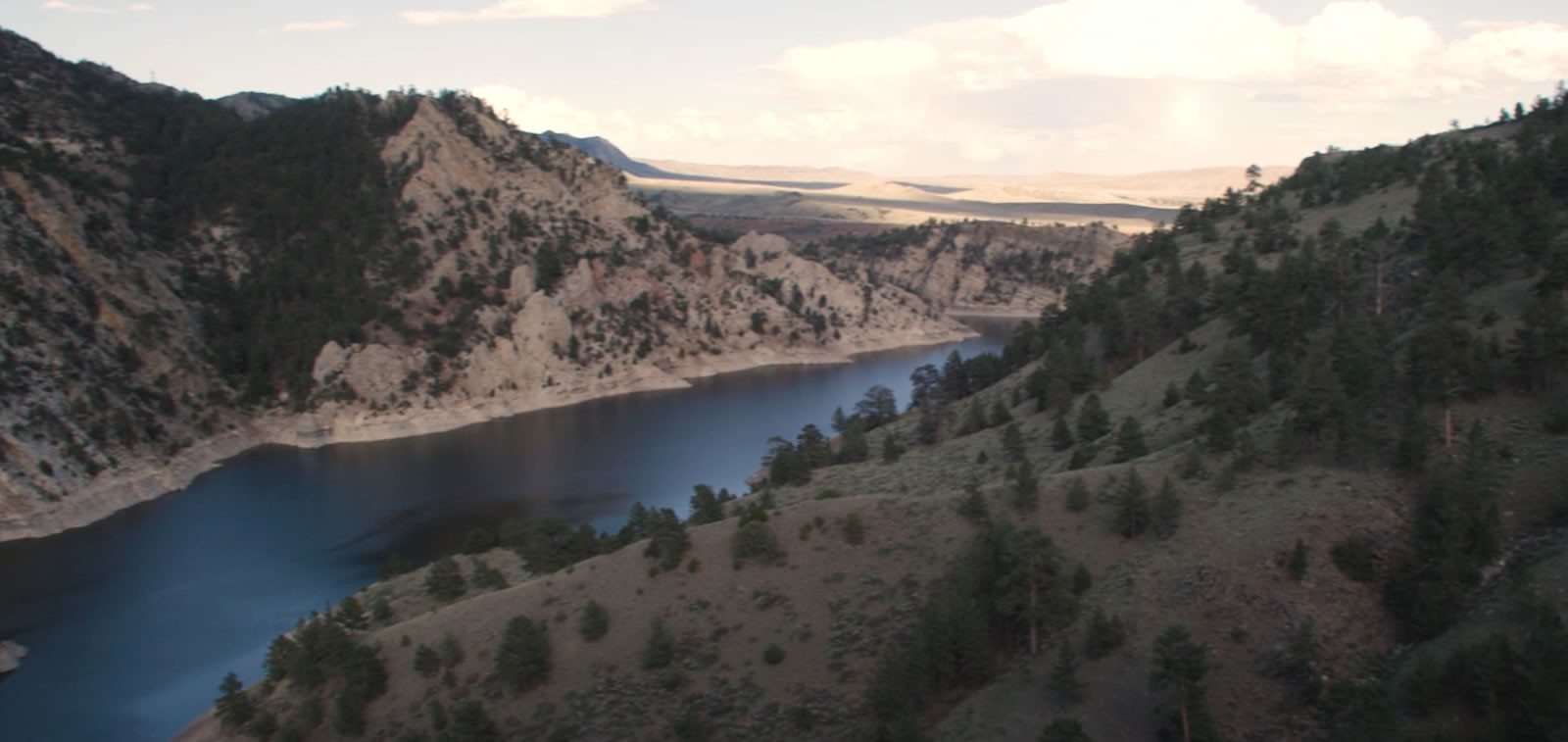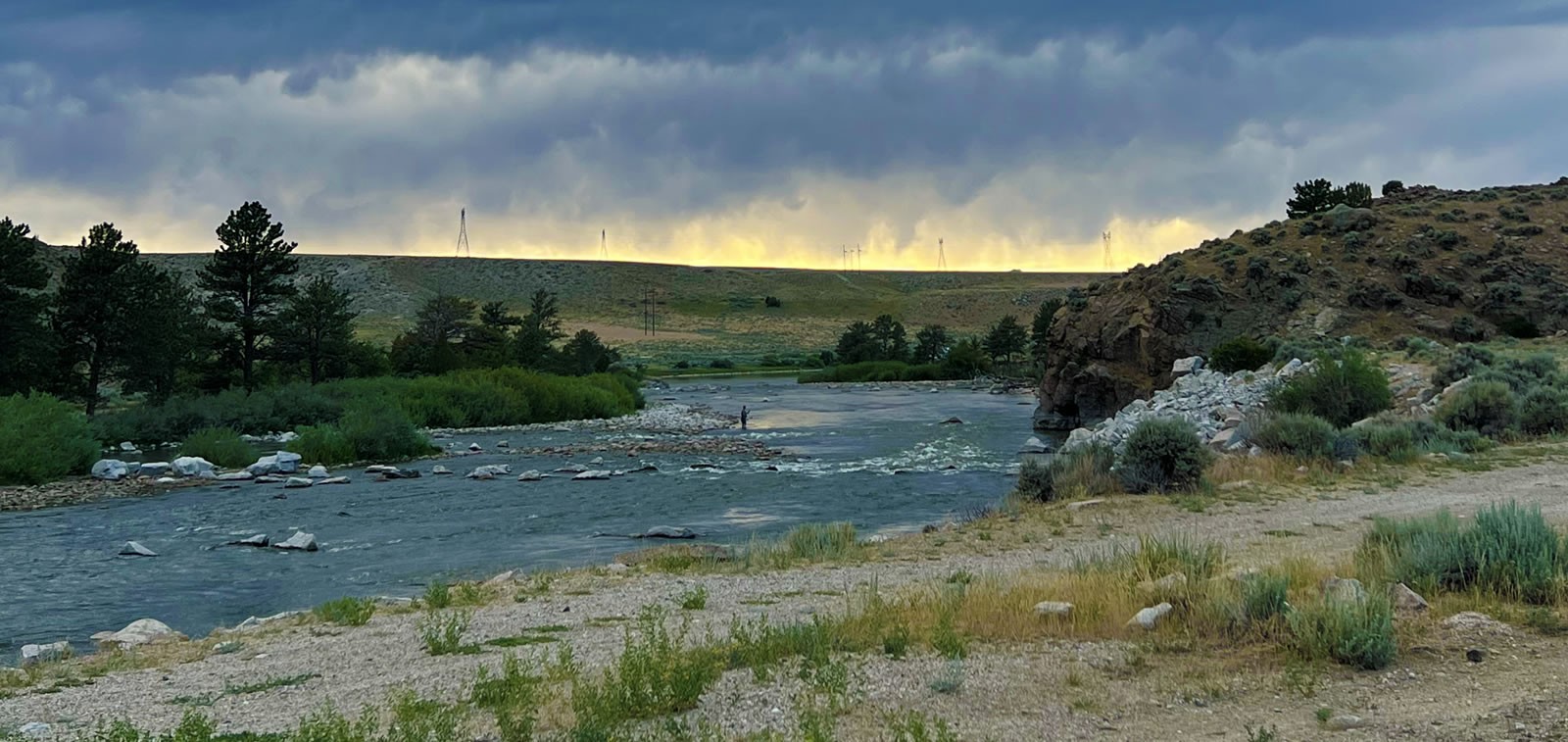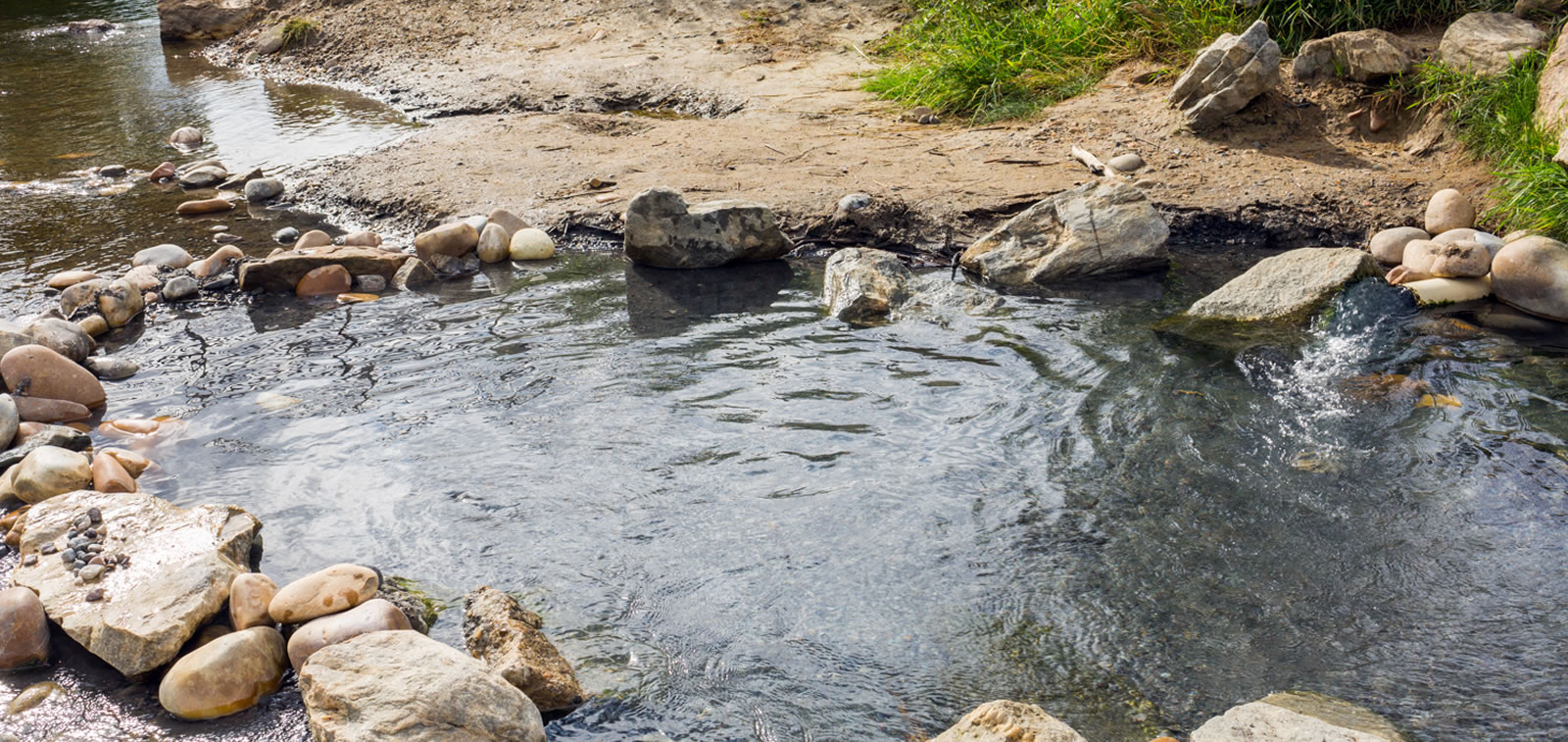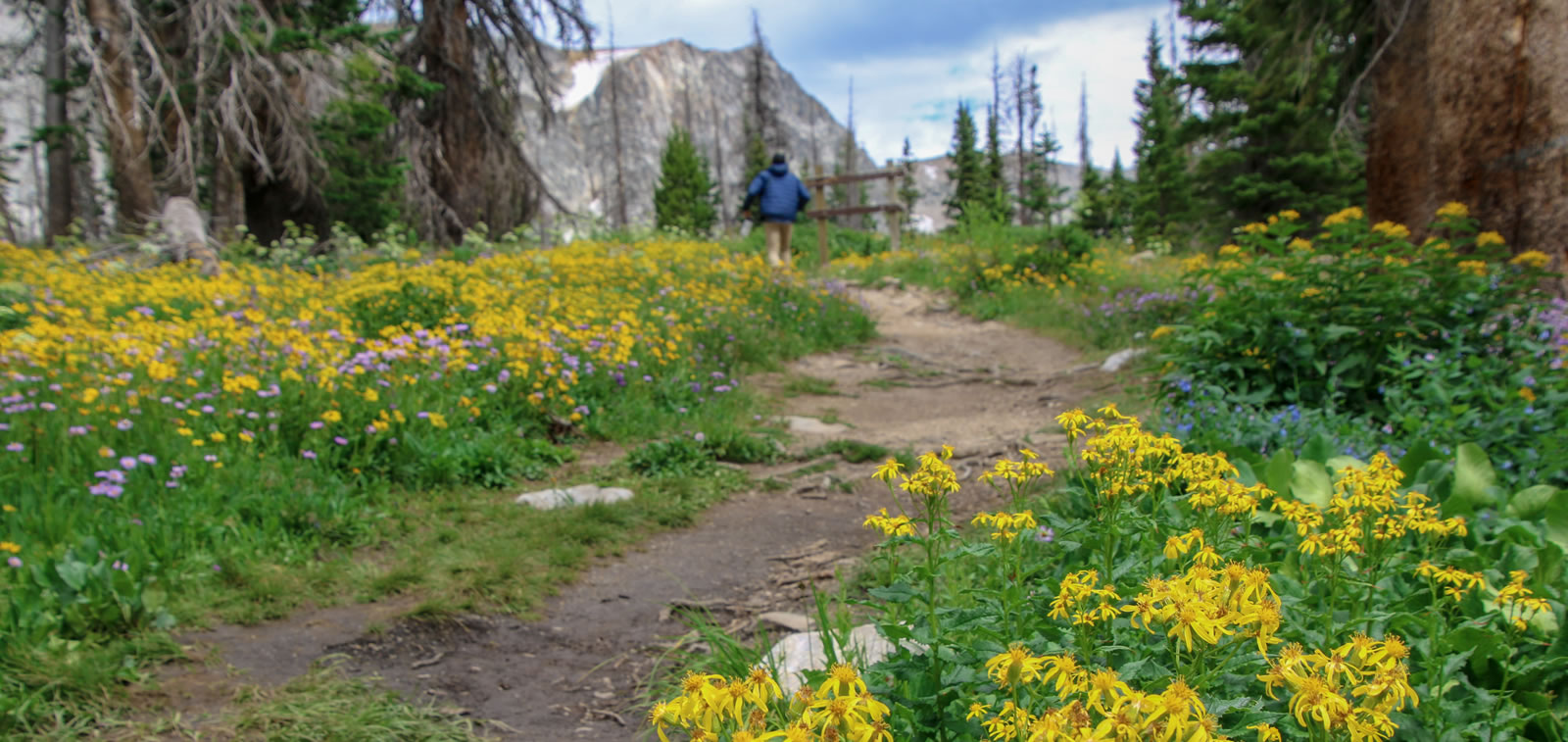As snow falls, blanketing the lands, our thoughts turn toward the promise of spring.
Before you know it, the sun will shine and uncover the open scenic byways teaming with new life. Bide your time inside by planning your road trips through Carbon County, Wyoming, using our guide to scenic byways and discover what you’ll find as you cruise these roads west.
FUN FACT: Fossil Cabin was a private residence. The owners donated the 1930s cabin to the Medicine Bow Museum, where it will be moved and turned into an exhibit.
Let’s begin with the Lincoln Highway, the first transcontinental highway in the United States that made cross-country travel more accessible. Along the way, you'll uncover unique buildings and landmarks (many on the National Register of Historic Places) and other sights you can't miss.
As you travel the Lincoln Highway through Bosler and Rock River on your way to Carbon County, you’ll come upon Como Bluffs. The long anticline ridge extends east to west between Rock River and Medicine Bow and is the site of one of the first major dinosaur fossil discoveries in the world in 1877. When two well-founded scholars rushed to find the bones first for the naming rights, a bitter fight ensued known as The Bone Wars. Even more interesting, you will pass by Fossil Cabin, the oldest cabin in the world so named because it’s constructed of dinosaur bones. It’s so unusual, the building was included in Ripley’s Believe It or Not.
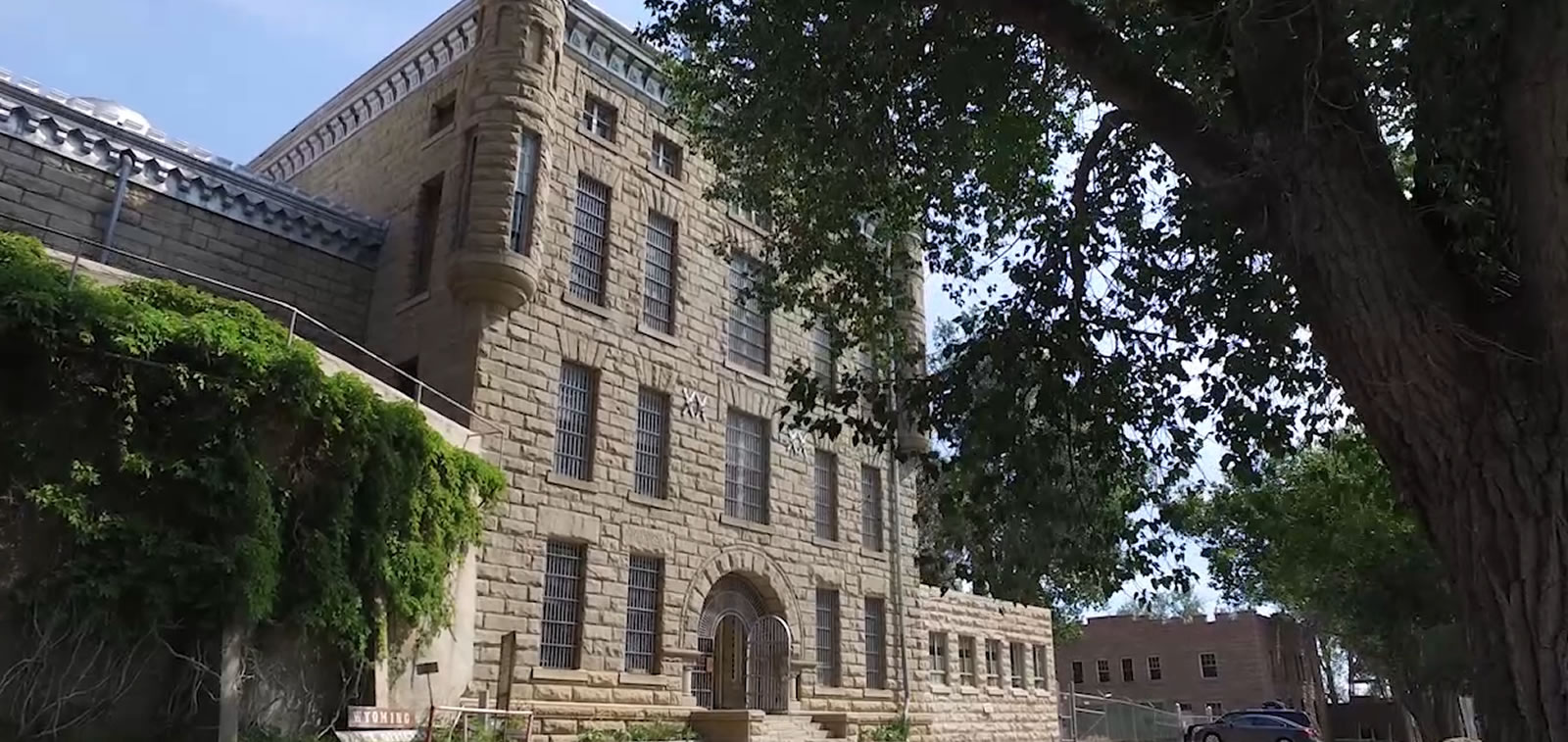
As you continue along the highway, plan to stop at the Medicine Bow Museum, located in the old railroad depot across the highway from the Virginian Hotel. Among the many artifacts and monuments here, you’ll find Owen Wister’s Cabin. The wood cabin was built by Wister in 1939 for a summer home and hunting lodge in the Jackson Hole area. Once you’re back on the road headed toward the mining town of Hanna, prepare to be wowed by wind farms comprised of turbines that tower more than 200 feet in the air.
You’ll find yourself at the center of one of Wyoming’s largest and richest coalfields in Hanna. Here you can visit one of two monuments to pay your respects to the 228 local miners who lost their lives in the 1903 and 1908 explosions. Uncover more about the mining history at the Hanna Basin Museum.
From Sinclair, take the old Lincoln Highway to Rawlins. In Sinclair, Wyoming, you’ll come across the delightful historic downtown where you explore the Parco Inn, old canon, renovated historic theatre, and the Parco/Sinclair Museum. Once in Rawlins, you will want to explore the historic downtown and the award-winning Main Street rich in 19th-century architecture, offering colorful murals, quaint shops, and places to eat. Don’t miss a chance to learn about the colorful history of the area at the Carbon County Museum or the Wyoming Frontier Prison before traveling westward.
Initially paved in the 1930s, the Snowy Range Scenic Byway was designated the United States’ second scenic byway in 1988.
This high-altitude drive meanders through some of the most spectacular and easily accessible peaks in Medicine Bow National Forest with many awe-inspiring stops.
Hikers can take a 5.5-mile hike to Medicine Bow Peak. At 12,013 feet, it's the highest peak in southern Wyoming and features switch-backs, rock crossings, and breathtaking scenery. Lake Marie (named after Mary Bellamy, suffragist and the first woman elected to the Wyoming State Legislature in 1910) is gorgeous and even has a waterfall.
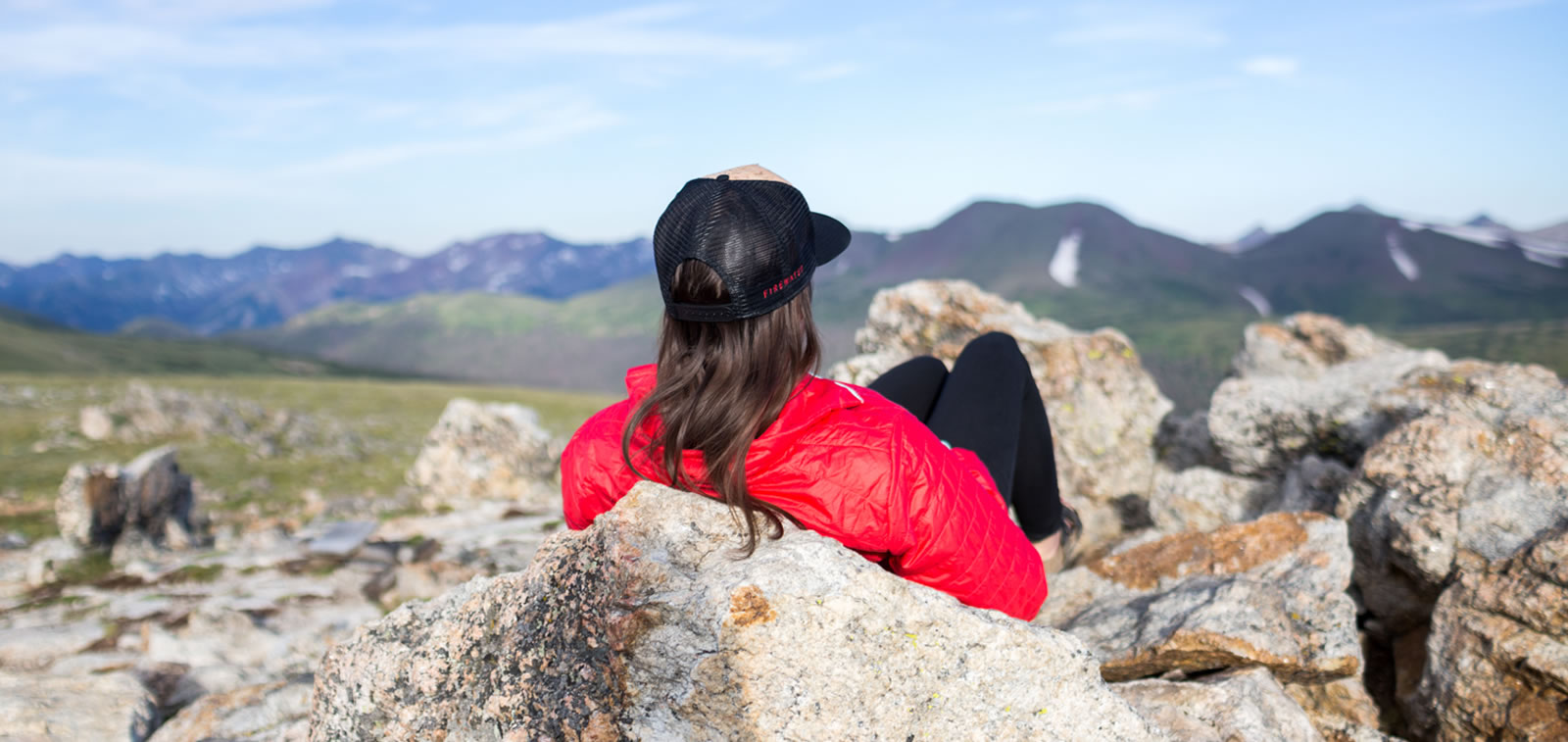
The highest point on the highway is Libby Flats Observation Point, with almost 360-degree views. Look south for the Rocky Mountain National Park. Turn west to see Medicine Bow Peak, the Sierra Madre Mountains, and Mt. Zirkel Wilderness Area, and east to find the Laramie Mountains.
Ryan Park Campground offers a look into its time as a prisoner of war camp, housing captured German and Italian soldiers in the 1930s, through historic interpretive signs. End your day with a soothing dip where Native Americans once soaked for the healing powers of the hot springs at the Hobo Hot Springs in Saratoga, Wyoming. It’s free to the public and open 24 hours a day, seven days a week.
FUN FACT: Every year, thousands of people traverse the Continental Divide Trail, also known as the CDT. This famous 3,100-mile trek passes right through Carbon County, Wyoming.
Stunning views line Battle Highway as it stretches over the crest of the Sierra Madre Mountain Range, between Encampment and Baggs, Wyoming. Often underrated, this pass, named for a famous battle between Native Americans and fur trappers in 1841, crosses the Continental Divide and offers mining ghost towns, historical sites, and much more.
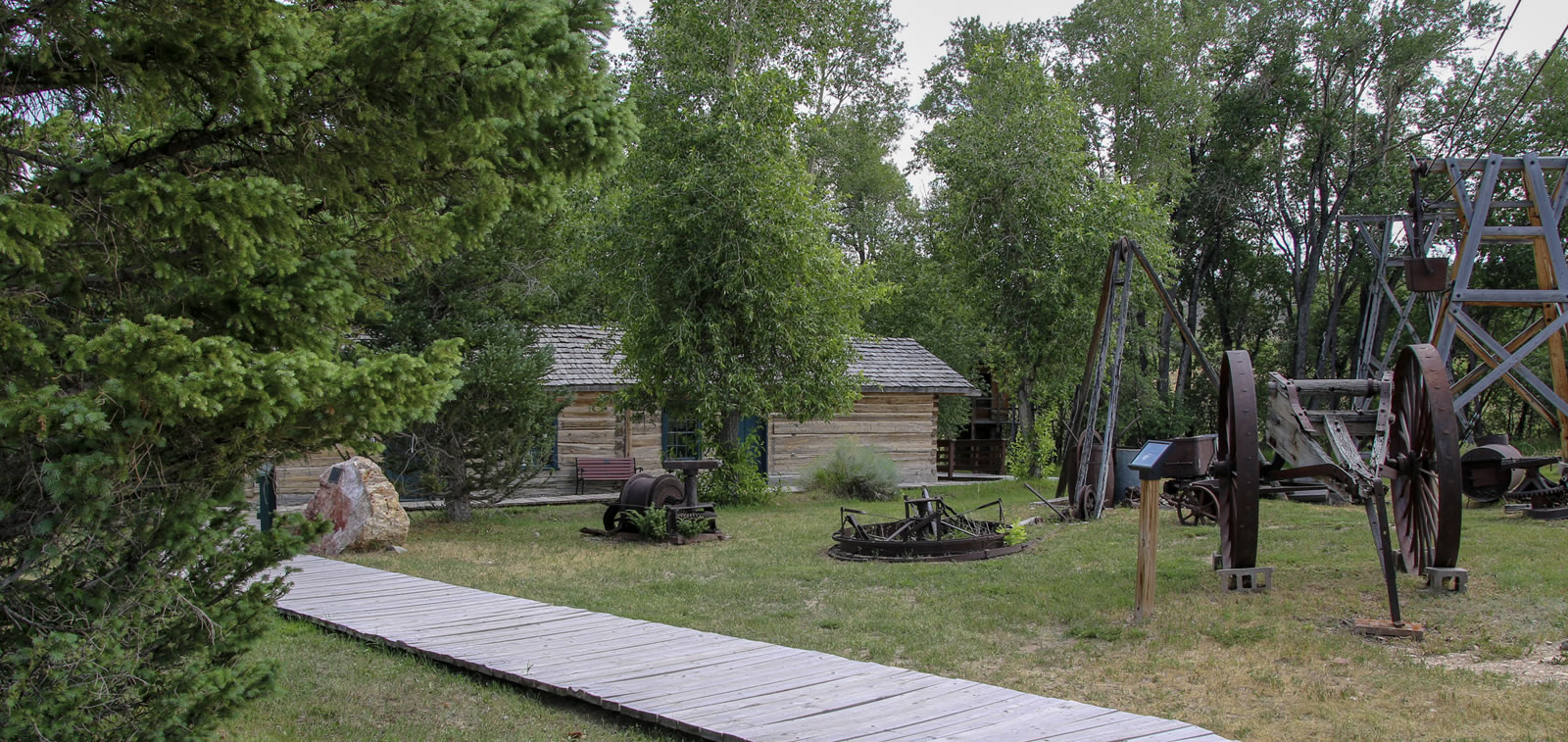
In Encampment, Wyoming, the Grand Encampment Museum preserves history with over a dozen historical buildings filled with timber, mining, and agricultural artifacts. Cruise up to the town of Battle, once a thriving mining and logging town, now a ghost town with abandoned cabins and a derelict police car. The Battle Townsite Overlook is an ideal rest stop at Battle Pass for its views and interpretive information that provides a snapshot of the once-bustling town during the historical mining era.
Keep an eye out for the pullout along Highway 30. While Battle Lake is a property owned by Brush Creek Ranch, you can take in the lake’s breathtaking views. Look for the Thomas A. Edison monument here, too, commemorating his 1878 vacation that inspired his discovery of filament for the incandescent electric lamp. Head west through the Medicine Bow Forest. Be sure to stop and explore 150 years of history at the Little Snake River Valley Museum in Savery, Wyoming, which features over 15 historic buildings, including Jim Baker’s cabin built in 1873, a one-room schoolhouse, two-cell jail, saloon, and more.
Between Sinclair and Alcova is a remote climb over the rugged Seminoe Mountains that leads to antelope-grazed prairie and stark desert in the backcountry. The landscape transforms before your eyes, and as the home to mule deer, pronghorn antelope, bighorn sheep, golden and bald eagles, and ferruginous hawks, sightings are common. There’s much to explore along the way.
This is a water lover's destination. The Seminoe Reservoir, Pathfinder Reservoir, Seminoe State Park, and Miracle Mile (a 7-mile stretch of the North Platte River) are popular fishing, boating, water skiing, and wildlife viewing areas. Seminoe Sand Dunes offer impressive dunes like the Ferris Dune Field. It’s part of a massive geological formation you can see from the road that reaches from western Wyoming all the way to Nebraska.
You’ll want to circle back to Rawlins and discover more monuments and memorials dedicated to the earlier pioneers. View more than 5,000 names of westward travelers at Independence Rock, also known as the Register of the Desert. You can also see Devil’s Gate, the 330 foot deep cut carved through the rock by the river. Continue on to the Mormon Handcart Historic Sites to honor the faith, obedience, sacrifice, and charity of Latter-day Saint emigrants who journeyed by handcart between 1856 and 1860. As you go, keep your eyes open and your camera ready: the west-side of Highway 287 is home to many wild horses and antelope.
Carbon County’s scenic byways are the perfect escape when warmer weather begins to melt away Wyoming’s snow. Use the winter days to dream of spring and all the sights waiting for your exploration.



